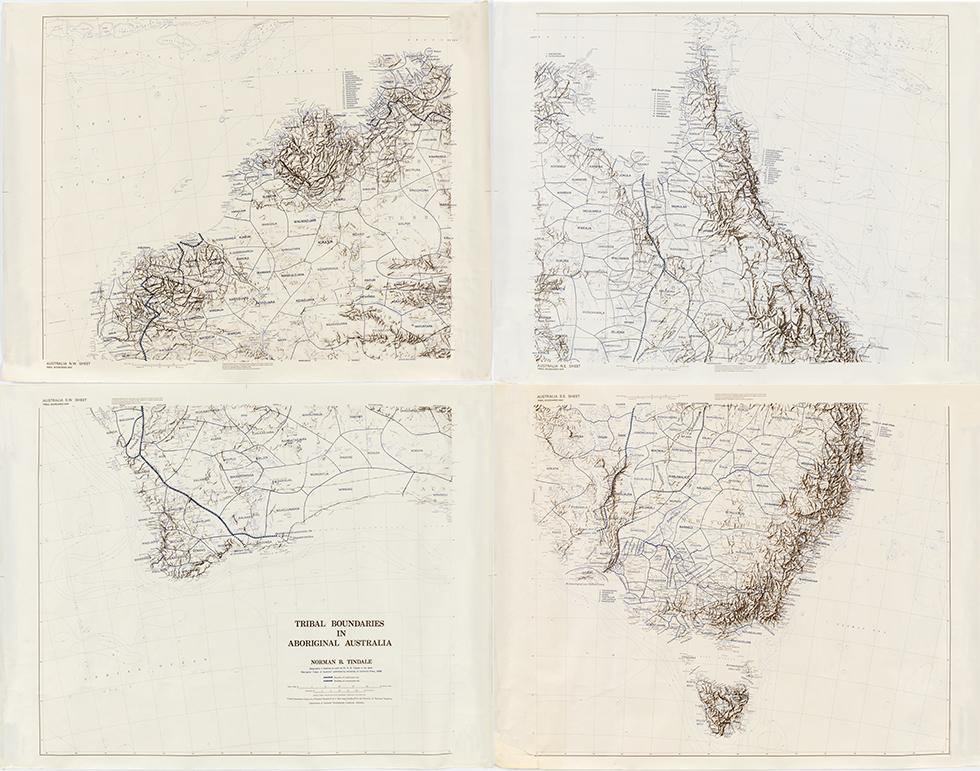
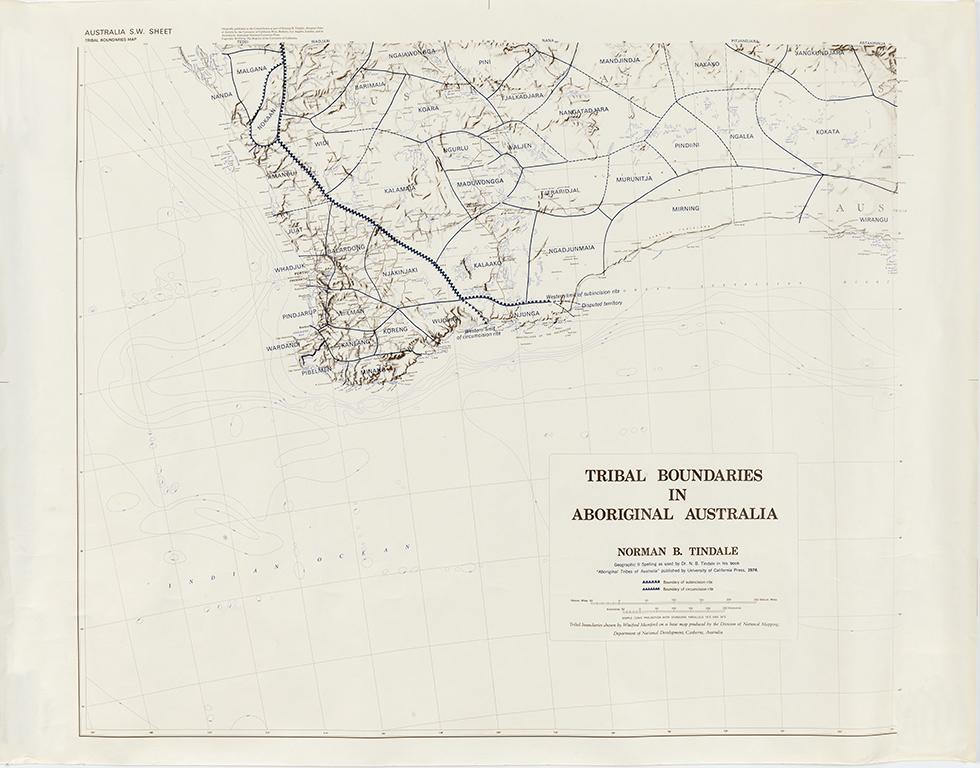
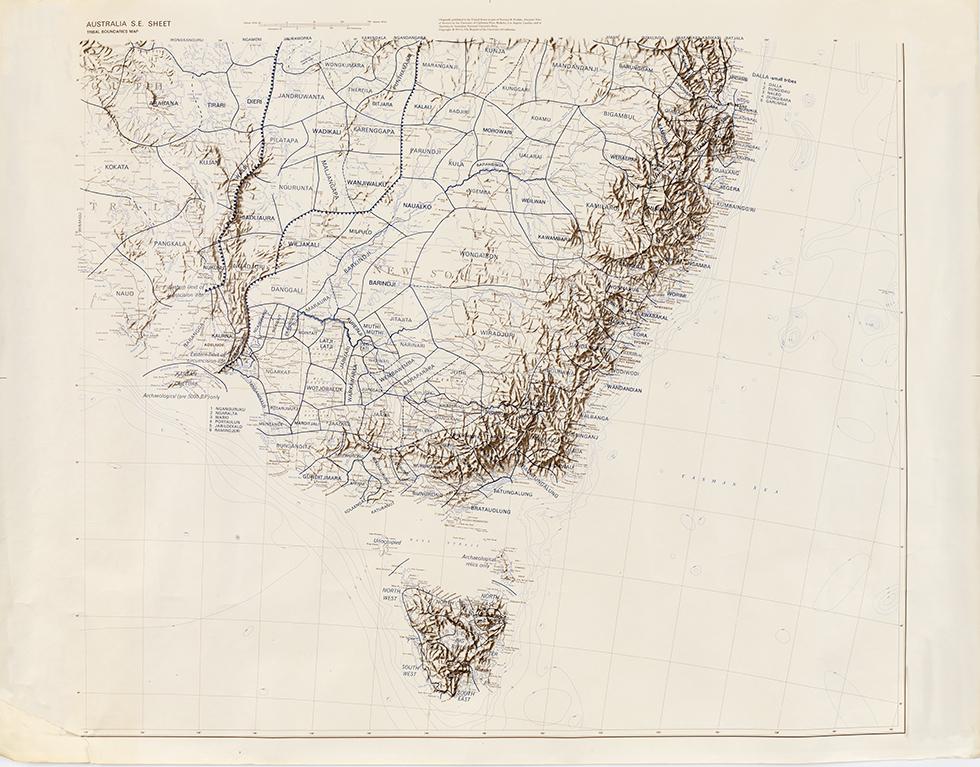
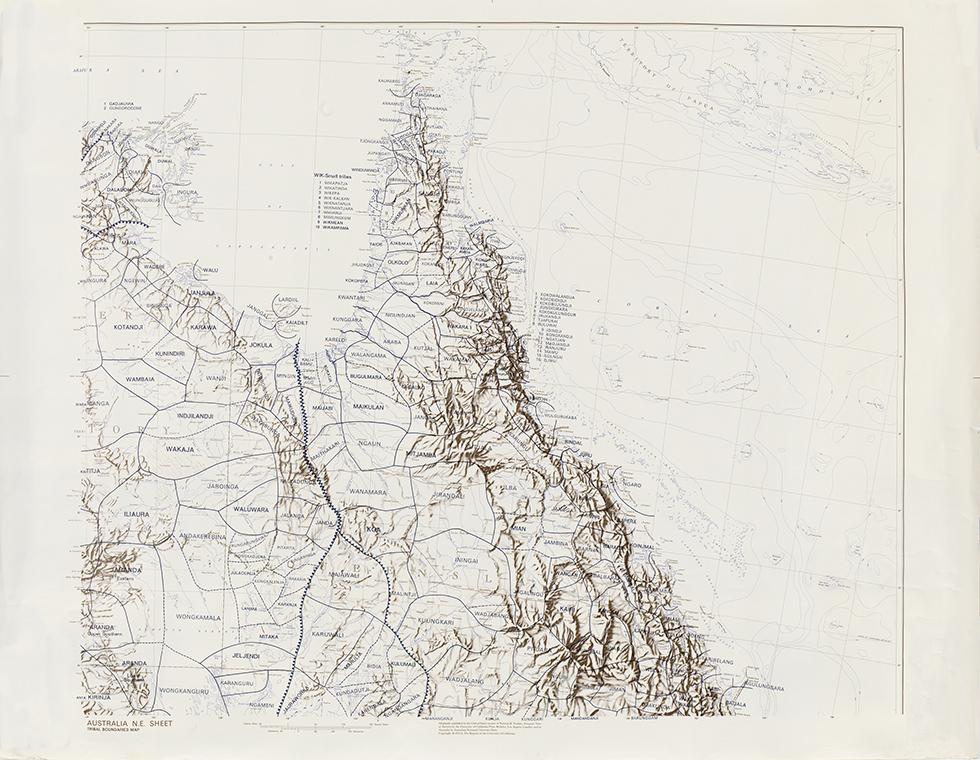
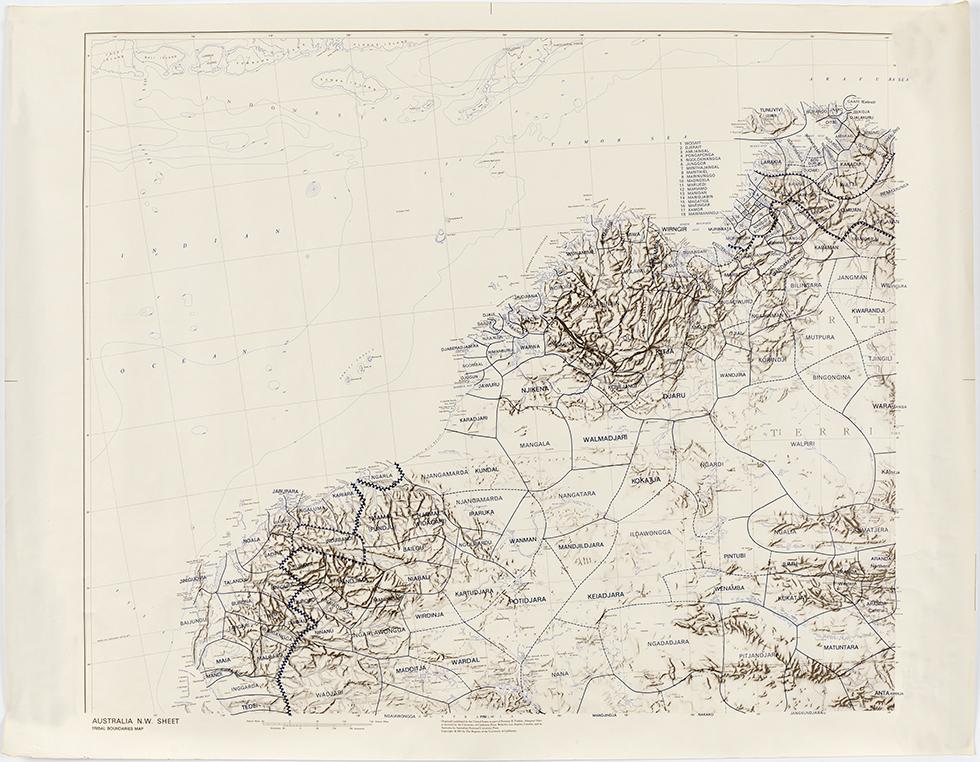
Aboriginal and Torres Strait Islander people should be aware that the National Archives' website and collection contain the names, images and voices of people who have died.
Some records include terms and views that are not appropriate today. They reflect the period in which they were created and are not the views of the National Archives.






These maps show Norman B Tindale’s attempt to record First Australian language groups. They illustrate the diversity of these languages.
Beginning in the 1920s, anthropologist Norman B Tindale spent over 50 years researching First Australian languages and cultures, attempting to identify all the languages spoken prior to colonisation. In 1974, he published the book Aboriginal Tribes of Australia which contains these maps.
Tindale’s maps illustrate the large number of First Australian languages spoken before colonisation. However, Tindale faced a range of challenges and, as a result, these maps were not always accurate. Traditionally, the First Australians were an oral culture, which meant that languages were not written down. More than 250 languages were spoken, including 800 dialects, sign languages and other non-verbal forms of communication. First Australians often spoke more than one language or dialect – a practice that continues today. As well, colonisation had displaced First Australians and disrupted the speaking and transmission of language.
Since colonisation, new forms of language have evolved and are now spoken by First Australians. These include ‘pidgin’ languages (used between British settlers and First Australians, using words and features of both languages) and ‘creoles’ (languages which developed from Pidgin as well as from Aboriginal English). According to the 2016 Census, creoles (like the ‘Kriol’ spoken in the Sydney and Newcastle region) are the most common languages spoken by First Australians.
First Australian languages represent more than just a way to communicate – they help people to feel connected to their culture and community and they form part of a person’s identity. Learning about First Australian languages is important for all Australians, as it helps us to better understand Australia’s cultural makeup and it promotes reconciliation.
Since colonisation, anthropologists and linguists have worked with some First Australian communities to record these languages. Where a language has ceased to be spoken, some communities have used these resources to try to revive languages.
Learn how to interpret primary sources, use our collection and more.
